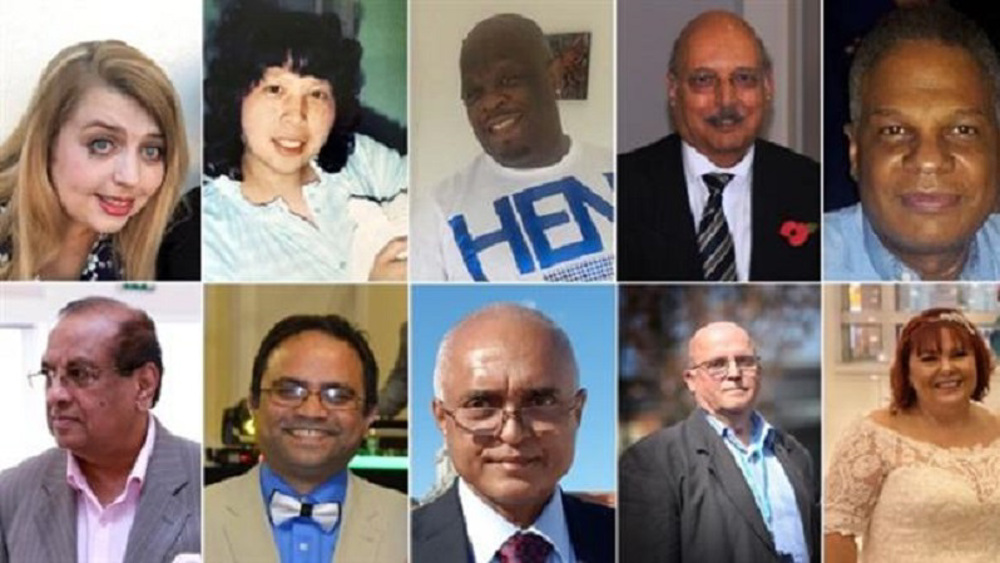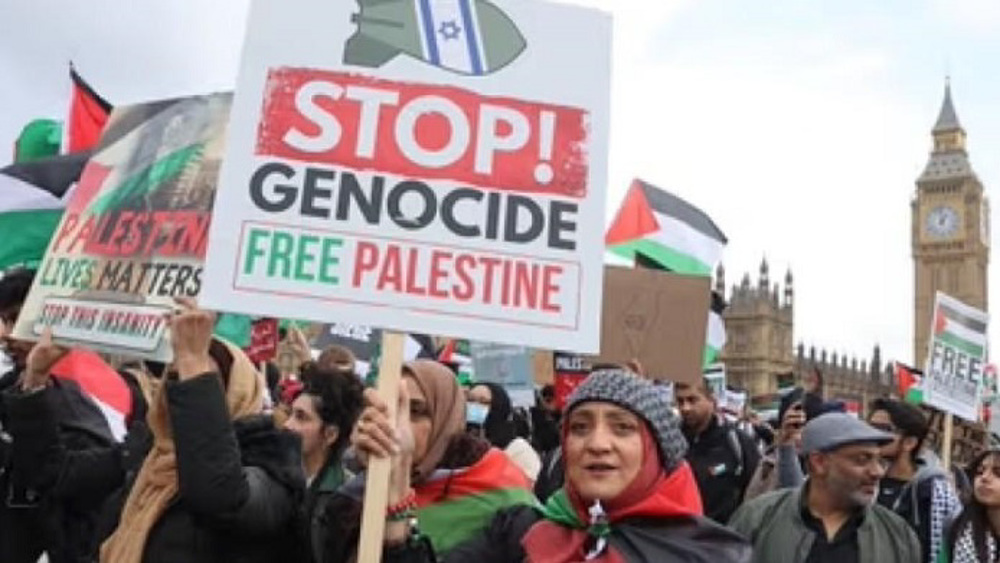UK ethnic minorities dying in greater numbers from COVID-19
A new report says the coronavirus epidemic is killing Britain’s ethnic minorities in disproportionate numbers, despite the fact that most minority groups are much younger on average than the white British population.
According to a report by the Institute for Fiscal Studies, (IFS), per capita deaths for people in Britain who had black Caribbean heritage were three times that for British citizens who are white.
Per capita deaths among other black groups were double that of the population overall, said the think tank.
The IFS said those of Indian descent also suffered more fatalities than average in the United Kingdom (UK).
The report said this could be explained, in part, because these people are more likely to work in healthcare and other sectors most exposed to the new coronavirus.
The UK's National Health Service (NHS) is the largest employer of Black and Minority Ethnic staff in the country. Some 40.1 percent of medical workers at the NHS are from minority groups.
This is while foreign doctors in the UK have typically found work in localities and practices that are apparently putting them on the dangerous front lines of the battle against the COVID-19 epidemic.
Last month, a team of professors from the Royal United Hospital Bath and the University of Bristol, said two-thirds — some 63 percent — of healthcare workers, who lost their lives to the coronavirus, were from an ethnic minority background.
According to a nursing website, at least 100 health and care workers had died of COVID-19, as of April 20.
Muslim sacrifices
Especially in Britain, "the sacrifices made by Muslims are so obvious and have been so great that this may lead to a belated change in public attitudes," former Daily Telegraph chief political columnist Peter Oborne wrote.
The first four medics to die from the outbreak were all Muslim.
The general secretary of the British Islamic Medical Association, Salman Waqar, said at the time that the contribution of these doctors to British society was "immeasurable.”
"They were devoted family men, committed senior doctors, and dedicated decades of service to their communities and patients," he said.
The government which fears a shortage of medical staff said that it would extend visas for about 2,800 medical staff, whose visas would expire before October 1.
The UK’s death toll from the epidemic now stands at 26,711, said Prime Minister Boris Johnson on Thursday. More than 171,000 people have tested positive for the disease.
Data from the US Centers for Disease Control and Prevention also highlighted racial disparities in the US, showing that African Americans are more likely to become infected and die of COVID-19 complications than their white counterparts.
The reports said Wednesday that more than 80 percent of the patients hospitalized in the state of Georgia were black.
Death toll in deprived areas double that of other places
Official figures released on Friday also showed deaths from COVID-19 in deprived areas of England was more than double that found in well-off locations, with London by far the worst affected.
The data from the Office for National Statistics, which covered deaths from March 1 to April 17, found there had been 20,283 deaths from the coronavirus, equating to 36.2 deaths per 100,000 people.
The figures also showed that the mortality rate from COVID-19 in the most deprived areas of England was 55.1 deaths per 100,000, compared to 25.3 per 100,000 in the least deprived places.
“People living in more deprived areas have experienced COVID-19 mortality rates more than double those living in less deprived areas,” said Nick Stripe, head of Health Analysis for the ONS.
“General mortality rates are normally higher in more deprived areas, but so far COVID-19 appears to be taking them higher still.”
The mortality rate in London was far higher than any other region at 85.7 deaths per 100,000 persons, nearly double the next highest figure elsewhere.
The worst hit areas in the capital were the boroughs of Newham, Brent and Hackney, which are among the poorest. Newham’s mortality rate was 1454.3 deaths per 100,000 population, the ONS said.
Araghchi: Iran-Russia strategic deal step toward ‘more just world’
UNRWA unraveled amid Israel's allegations, reduced intl. support
Palestinian journalist, a Sobh Media Festival awardee, killed in Gaza hours before truce
Jan. 15: ‘Axis of Resistance’ operations against Israeli occupation
VIDEO | Fears, hope in Gaza amid intensified ceasefire efforts
VIDEO | Press TV's news headlines
Hamas: Ceasefire agreement result of steadfastness, resistance in Gaza over 15 months
Hamas thanks Iran, Resistance Front following achievement of ceasefire in Gaza












 This makes it easy to access the Press TV website
This makes it easy to access the Press TV website